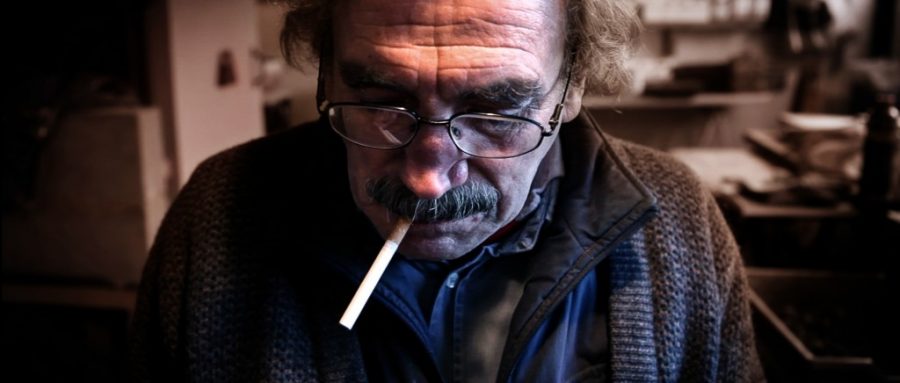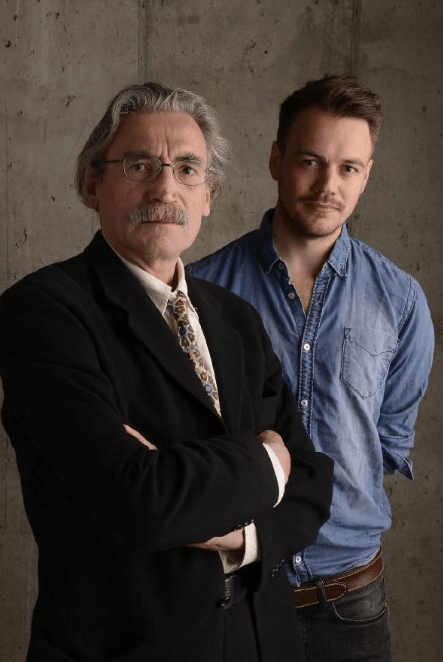
 In “Garnet’s Gold”, director Ed Perkins takes us on a journey to the Scottish highlands as he and his subject, Garnet Frost, try to find a long lost treasure missing since 1745. Two decades before, Frost encountered a near death experience in the very same place, where he found a mysterious wooden staff he believes is the key to finding the gold. Set against the majestic landscapes of Loch Arkaig, “Garnet’s Gold” is a different kind of adventure film, as slowly we realize that the treasure after all isn’t as fascinating as Garnet’s emotional journey.
In “Garnet’s Gold”, director Ed Perkins takes us on a journey to the Scottish highlands as he and his subject, Garnet Frost, try to find a long lost treasure missing since 1745. Two decades before, Frost encountered a near death experience in the very same place, where he found a mysterious wooden staff he believes is the key to finding the gold. Set against the majestic landscapes of Loch Arkaig, “Garnet’s Gold” is a different kind of adventure film, as slowly we realize that the treasure after all isn’t as fascinating as Garnet’s emotional journey.
The film made its New York debut at the Tribeca Film Festival and we had the opportunity to sit down with director Perkins and Mr. Frost, who shared anecdotes about the making of the film, discussed their future projects and gave us a peek into the rich history of the highlands.
StageBuddy: For starters how did you two meet and decided to make a film?
Ed Perkins: We first met about four years ago. Garnet was in one of the pubs in London where he sings and he was talking about this adventure and this trip he wanted to take to Scotalnd and it was overheard by another filmmaker.
Garnet Frost: It was overheard by a friend of a friend, this was all very indirect, I was talking to my friends about my ideas and this guy approached us and said “I took the liberty of conveying some of your ideas to a friend of mine who’s a filmmaker, who might be interested in meeting you”. Before I knew it I had a call from a documentary company, they showed up at my house, the first time I met them, camera in hand. I didn’t set up to make a film really and I don’t think Ed wasn’t looking for that either. It was until we met that we fired our enthusiasm, we talked about it, saw how I looked on camera (smiles) and all that sort of thing.
EP: I was working for a television producer and was looking for stories to produce, stories I had would have the potential for a feature length. When I first met Garnet, his idea was to make a more historically focused documentary, with people dressed up in reenactment clothes, and they’d walk across the highlands and we’d tell the story of Bonnie Prince Charlie and I suspected straight away, that even though that wasn’t the avenue I wanted to take, I was sure that there was a lot more to Garnet and his world. We kept in touch, we would grab a drink at the pub and I got to meet his friends, his mother and over the course of six months some interesting themes started to emerge. I had the gut feeling that this was a story I needed to stick with. I got obsessed with this story, but it did take the better part of four years to bring this story to the screen.

SB: Obsession is a recurring theme in the film. We see Garnet’s obsession with this treasure and we see your obsession in capturing this. How did you come up with the themes and tone you wanted to explore?
EP: Films like this that take four years, you have to be somewhat obsessed, you have to have the naive confidence that other people will find this story as interesting as you did. For most of the time I didn’t even know what the story actually was. In terms of my creative treatment, whenever you’re approaching a new story, your directorial approach should be governed by the story itself. I realized over the course of the six months was that although Garnet’s goal was to find this gold, there was a much more important story going on, the one going on inside his head. I tried to bring as much emotion and tell the emotional journey.
Also, something else that caught my attention were the characters surrounding Garnet and they all have a very British way of living. Garnet’s house is stacked with books on art, poetry and music and in order to tell his story I had to embrace the lyricism, poetry and romance of his world. The film’s unique visual tone came from trying to capture that poetic approach Garnet has in his own life.
GF: Since we’re both artists, we also discussed the themes. For the spiritual quest for example, I read a lot of Saxon myths, the story of the Fisher King in particular, Percival and his search for the Holy Grail. These medieval stories have very clear cut elements of a character setting out on a journey and all the possible obstacles and perils ahead. He also finds a mystery he can’t comprehend. I found that very compelling, because by some curious coincidence, there were parallels in the process of making the film. I became fascinated by the story which involves a character who loses his ability to walk and when we actually went up to the place, we met the landowner and we discovered that the owner is called Donald Cameron of Lochiel, just the same as the guy in the legend and he lives in the same castle where the story took place. He was confined to a wheelchair, he was fascinating, but it was a weird thing of the past and the present fusing together and resembling this myth. So we did want to bring out this archetypal quality in the film.
SB: In the film we see Garnet painting, performing magic tricks. Would you have tried to find another outlet to tell this story without the film?
GF: I’ve got enough material to write a book which I may do if I find the energy to do it, which would be about the lost gold. The film is a personal portrait of me, which is fine, but there was a lot of material the film barely touched on at all. This historical epic full of romance, tragedy, great characters. The fact that Ed was around made it impossible not to figure out things were being filmed, so that motivated me to set up the expedition, which I probably wouldn’t have done if left to my own devices. It also inspired me in other ways, because in the film you see me performing Houdini-like tricks and in fact I’ve written a radioplay about Houdini. I’ve also been working on a stage play with a portable set and a small cast that would illustrate Houdini’s life with examples of his magic. I like that intimacy with the audience.
EP: The relationship between the filmmaker and the subject is fascinating to me, in this film is so personal and intimate. So for a film like ours to work, there has to be a relationship between us, even before we start shooting, in order to get in a position where we trust each other. I do think we got to an amazing place, I think Garnet is amazing and I’ve come to love him in my own way, because it takes a lot of courage to be that way in front of a camera. In that way, he’s braver than I am.
SB: Besides covering his inner journey you also follow Garnet across streams and climb cliffs and mountains with him. I was wondering in terms of logistics how was the shoot?
EP: On the very first day of filming I turned up at Garnet’s house with a whole crew, we filled his kitchen with a camera man, a lighting kit, a boom operator...and I realized that wouldn’t work. So I realized it would be better if I shot the whole thing with Garnet. I did sound on my own, it was a one man band. We would go up the highlands and Garnet would trek up a hill and I would be behind him with my camera and a backpack full of batteries and that was it. It was the most bare filmmaking ever. It was very exciting!